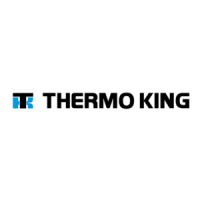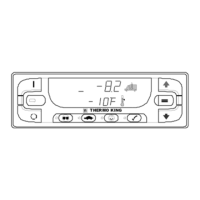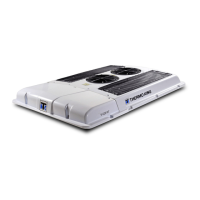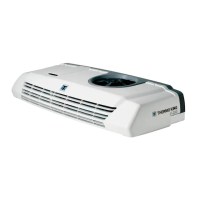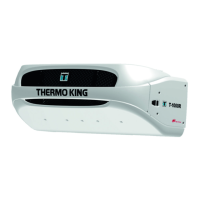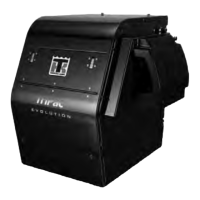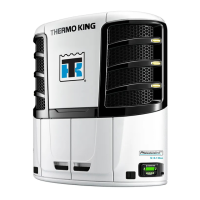TK 61650-18-OP-EN
39
Loading and Inspection Procedures
This chapter describes pre-loading inspections, loading procedures, post-
loading procedures, post-loading inspections, and enroute inspections.
Thermo King refrigeration units are designed to maintain the required
product load temperature during transit. Follow these recommended loading
and enroute procedures to help minimize temperature related problems.
Post-Start Inspection
TThheerrmmoossttaatt:: Adjust the thermostat setting to above and below the
compartment temperature to check thermostat operation (see Operating
Modes).
PPrree--ccoooolliinngg:: With the thermostat set at the desired temperature, run the
unit for half-an-hour to one hour (or longer if possible) before loading the
truck. Pre-cooling eliminates residual heat and acts as a good test of the
refrigeration system.
DDeeffrroosstt:: When the unit has finished pre-cooling the truck interior - the
evaporator temperature should have dropped below 2ºC (35.6ºF) - initiate a
defrost cycle with the manual defrost switch. The defrost cycle should stop
automatically.
Loading Procedure
1. To minimise frost accumulation in the evaporator coil and a heat
increase inside the load compartment, ensure that the unit is OFF before
opening the doors (The unit may continue to run when the truck is being
loaded in a warehouse with the doors closed).
2. Carefully check and record the load temperature when loading the truck.
Note whether any products are out of temperature range.
3. Load the product in such a way that there is sufficient space for the air to
circulate throughout the load. DO NOT block the evaporator inlet or
outlet.
4. Product should be pre-cooled before loading. Thermo King units are
designed to maintain the load at the temperature at which it is loaded.
Transport refrigeration units are not designed to reduce the load
temperature.
Post Load Procedure
1. Verify all doors are closed and locked.
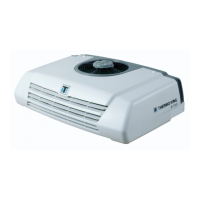
